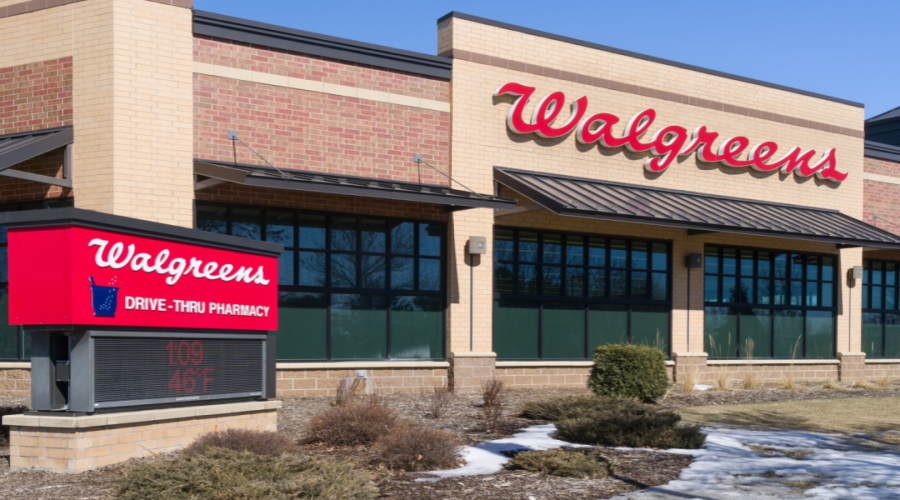In June 2019, two community pharmacy organizations created a program designed to transform pharmacies from providers of medication into providers of care. Board members of the Community Pharmacy Foundation (CPF) and the Community Pharmacy Enhanced Services Network (CPESN® USA), who are pharmacists themselves, recognized that the daily grind and a lack of resources restricted many pharmacies from stepping out and taking the risks needed to change their practice. So they came up with a standardized, practical way for pharmacies to implement real changes, with the support of one another and coaches, called Flip the Pharmacy.
″It’s meant to be applied across all pharmacies at the same time, sharing information, having webinars, adjusting so they all learn together and everybody is advancing at the same time,″ said Anne Marie Kondic, executive director of the Community Pharmacy Foundation, a grant-making organization that advances the practice of pharmacy in a community setting.
Equipped with the technical assistance and practical steps needed to become a pharmacy centered on patient care, members of Flip the Pharmacy can begin to change their practice even amid the pressures of their everyday business. The program focuses on four clinical areas in six-month modules over the course of two years. The clinical topics are hypertension, opioid use disorder, immunizations/Covid-19, and diabetes/social determinants of health. Each clinical area is taken through six operational areas of change, referred to as ″domains:″
- Domain 1: Leveraging the appointment-based model
- Domain 2: Improving patient follow up and monitoring
- Domain 3: Developing new roles for non-pharmacist support staff
- Domain 4: Optimizing the utilization of technology and electronic care plans
- Domain 5: Establishing working relationships with other care team members
- Domain 6: Developing the business model and expressing value
How the program works
Flip the Pharmacy is designed to introduce small process changes gradually, step by step. ″This is a journey. It’s a marathon, not a sprint. So we’re not doing everything all at once,″ said Cody Clifton, FtP director of implementation and strategic initiatives. The instructions or methods of change are detailed in ″change packages,″ which serve as a kind of workbook for each clinical area and domain. Modeled after government change programs by CMS, these documents include ″tools and links and examples from pharmacies who have made changes in their workflow. Instead of it being a really big document, there’s some structure and some examples, which are posted on the website so everyone has access to a tool,″ Clifton explained.
One month in the program looks something like this: During domain one, pharmacies will identify 10 patients each week that should be enrolled in med sync. By the end of the month, they will submit 25 eCare plans for patients on med sync and discuss the results with their FtP coach. They will take a self-assessment quiz, consider suggestions for optimizing the new time freed up through med sync, and then list three changes they will be implementing. They will also receive detailed guidance for identifying the right patients, getting them enrolled, making the most of the appointments, and documenting the results, among other recommendations. In other words, the change packages address big picture issues as well as the small details of the processes and tasks—all applied gradually over the course of one month.
The anchor of this program is the first domain, the appointment-based model (ABM), which itself centers around medication synchronization. ″That’s the core and crux of it. Everything begins and everything else builds on that,″ Clifton said. Once ABM is adopted, the rest of the domains are much easier to implement. Workflow hums. You have a better grip on patient traffic and can allocate staffing and tasks to more efficiently meet the needs of the pharmacy. The consistency and reliability of ABM increases the flexibility of pharmacists, allowing them to engage with patients, providers, and other business tasks with less disruption and with more efficiency.
Documentation through the Pharmacist eCare Plan (PeCP) is one requirement for all pharmacies involved in Flip the Pharmacy. It is an interoperable standard so all pharmacy technology providers exchange the same information related to care delivery—including goals, health concerns, active medication lists, medication-related problems, laboratory results, vitals, care coordination notes, payer information, and more. All pharmacies are expected to use an eCare plan from one of the 18 technology solutions partners listed on the FtP website.
By the end of the two years, the pharmacy will not only have transformed its practice model but will have positioned itself to transform its payment model. ″Ultimately you wrap all that together and you’ve got data to show how the business model is expressing value and then comes the payment return,″ Clifton said. ″You may not enter a value-based contract within six months, but you’re building up slowly to make some of those connections.″
How to get involved
So far, there are two Flip the Pharmacy cohorts. A cohort is composed of teams, usually at the state level, who select pharmacies and coaches to participate. The coaches serve as mentors, walking the pharmacies through the packages to help them implement the changes in their practice. The first two cohorts have 34 unique teams supporting more than 800 pharmacies. Every fall, a new cohort is formed. Although the program is technically open to anyone, to get involved with a cohort at this time you need to be a part of CPESN’s clinically integrated network or enter into a data-sharing agreement. However, Kondic emphasized that the program is meant for any and every pharmacy. Anyone can access the change packages and follow along on their own. All the material is online and free to the public.
No matter what the program does for the business of pharmacy, for pharmacists and non-pharmacist staff the return on investment transcends the bottom line. ″We have heard that the program has brought back their joy for practice,″ Kondic said. ″That they feel reenergized, that they feel purposeful. It’s brought back that patient engagement piece, which was the driver for going into pharmacy.″
Pharmacy Domains
Source: https://www.flipthepharmacy.com/what-is-ftp
Domain 1: Leveraging the Appointment-Based Model – Medication Synchronization is at the core of the ABM model, yet what are the patient evaluation, care coordination, and medication use support services that may be efficiency layered alongside the mechanical medication synchronization process.
Domain 2: Improving Patient Follow Up and Monitoring – Community-Based Pharmacies have great opportunity to lead the health care system in effective patient follow up and monitoring utilizing system-leading number of patient touch points.
Domain 3: Developing New Roles for Non-Pharmacist Support Staff– Gone should be the days of limiting pharmacies to two types of roles: Pharmacist and Pharmacy Technicians. Roles that address common challenges to the healthcare system such as patient engagement and activation, care team communications, social determinants of health, and analysis of data are essential to successful population health management and accountable care.
Domain 4: Optimizing the Utilization of Technology and electronic Care Plans – The eCarePlan is fundamental to the successful operationalization of Domains 1-3 and 6. Working hand in hand with software companies, pharmacies should develop best practices documentation processes.
Domain 5: Establishing Working Relationships with other Care Team Members – Results from CCNC’s CMMI innovation project showed that pharmacies who built and maintained meaningful working relationships with other care team members.
Domain 6: Developing the Business Model and Expressing Value – What is the return on investment to the pharmacy for moving towards longitudinal, patient level health care services delivery.
From the Magazine
This article was published in our quarterly print magazine, which covers relevant topics in greater depth featuring leading experts in the industry. Subscribe to receive the quarterly print issue in your mailbox. All registered independent pharmacies in the U.S. are eligible to receive a free subscription.
More articles from the March 2021 issue:
- Five lucrative ways to monetize your pharmacy
- A new training program qualifies technicians to administer Covid-19 vaccines in a single day
- How to pass any pharmacy inspection with flying colors
- The supplement market is thriving. Is your pharmacy taking advantage?
- Tap into loyalty for bigger profits, happier employees, and faster growth
- The Covid-19 vaccine boosts this pharmacy’s patient base and its profits
- Where to cut costs when you have no other choice
- How to transform pharmacies into patient care centers
An Independently Owned Organization Serving Independent Pharmacies
PBA Health is dedicated to helping independent pharmacies reach their full potential on the buy side of their business. The member-owned company serves independent pharmacies with group purchasing services, expert contract negotiations, proprietary purchasing tools, distribution services, and more.
An HDA member, PBA Health operates its own NABP-accredited (formerly VAWD) warehouse with more than 6,000 SKUs, including brands, generics, narcotics CII-CV, cold-storage products, and over-the-counter (OTC) products.
Want more pharmacy business tips and advice? Sign up for our e-newsletter.












